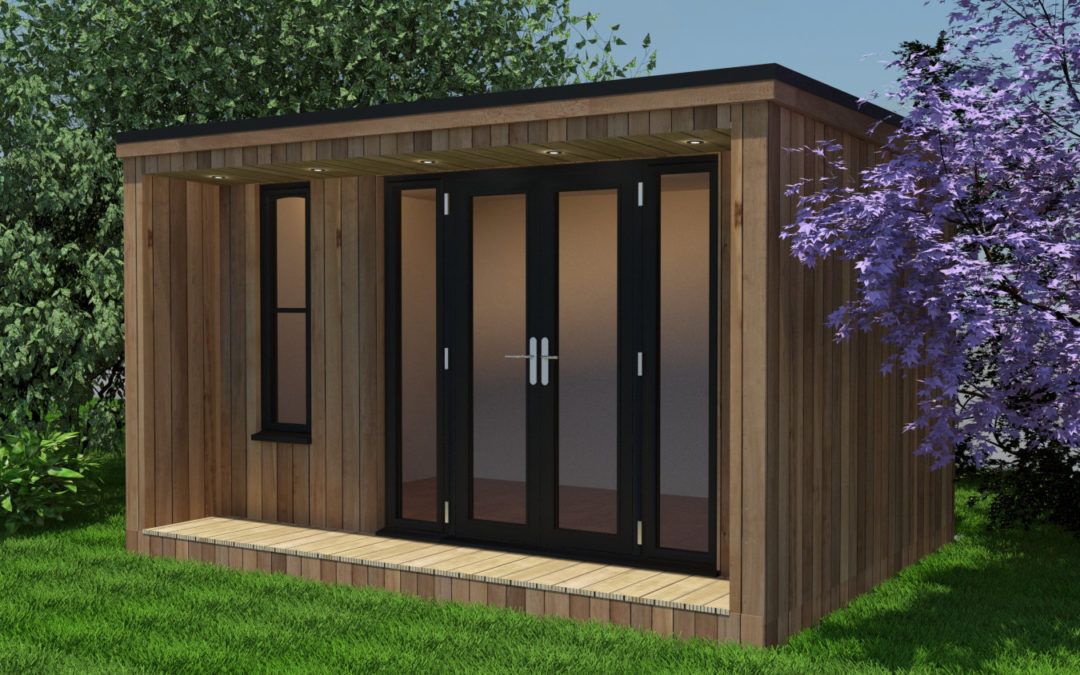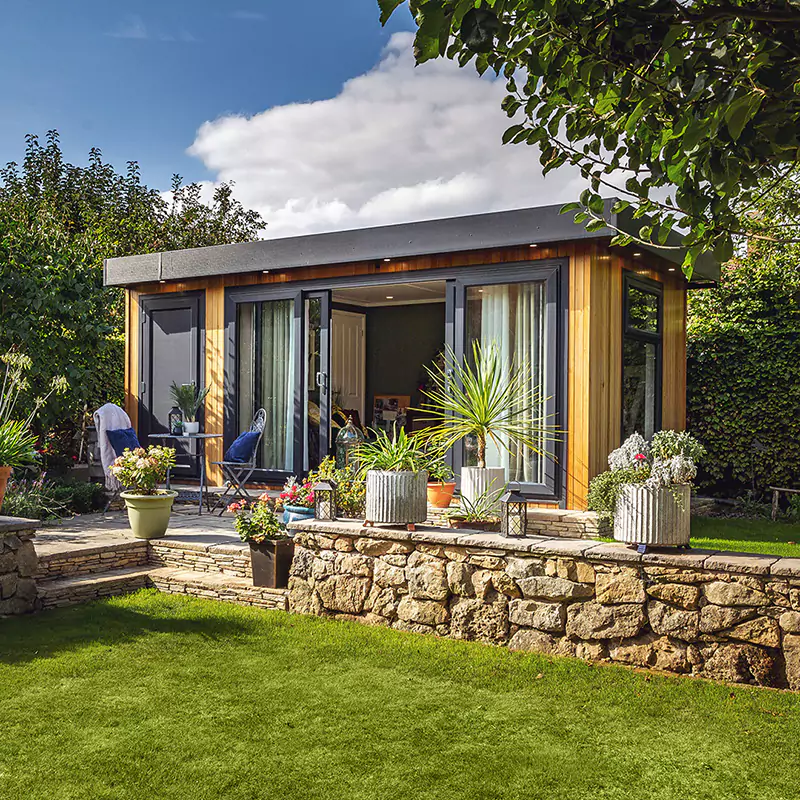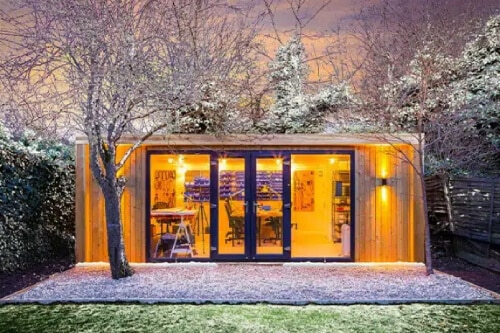Best Facts On Planning Permission For Garden Extension
Best Facts On Planning Permission For Garden Extension
Blog Article
What Size Is A Garden Room?
When considering the construction of garden rooms outhouses, conservatories, extension or garden offices certain size limitations usually determine whether you require planning permission. Below are a few of the most common dimensions which may need you to seek planning permission.
For an outbuilding that is detached the planning permission is typically required if the area of the proposed structure together with any other outbuildings that are already in place, exceeds 50 percent of the total area of the land surrounding the original house (excluding the area of the house's footprint).
Height limits:
Single-story structures. The maximum eaves can't be more than 2.5 meters.
If the building is within 2 meters of the property boundary it cannot exceed 2.5 meters.
Floor Area:
Structures with a floor area that exceeds 30 square metres might need building regulations approval, even in cases where planning permission isn't needed.
Distance from borders:
If the structure exceeds 2.5 meters high and is within 2 meters of the border, the building permit will be required.
Building Use
Although not strictly a limit on size, the function of the gardenroom could influence whether planning permission will be required. Planning permission might be needed when, for example the structure is planned to be used as a commercial or residential space.
Permitted Development Rights:
Permitted Development Rights apply specific restrictions on size and conditions. These rights are contingent on if the property is in a conservation zone or is subject to restrictions.
Conservatories, extensions, and other conservatories of different types:
In general the case of a single-story extension at the rear of a detached house, maximum depth is 4 metres and for semi-detached houses or terraced houses, it's 3 meters. Under the Neighbour consultation program, these limits may be increased to 8 metres and 6 meters, respectively.
The rear extension of a single-story structure should not be greater than 4 meters.
Side Extensions
The maximum height for an extension sideways must not exceed 4 meters.
Volume Restrictions
In some areas (such as conservation areas and Areas of Outstanding Natural Beauty) A building which increases the house's volume in excess of 10 percent or 50 cubic meters (whichever is larger) could require planning permission.
Front Extensions:
Planning permission may be needed for extensions that extend past the original front of the home that faces the street.
Contact your local authorities as rules can differ in accordance with local councils as well as the conditions of your property. Building regulations approval might be required even when planning consent is not needed. This could be due to security or structural reasons. Take a look at the recommended 5m x 5m garden room for more tips including costco outhouse, ground screws vs concrete base, garden rooms near me, Tring garden rooms, composite garden rooms, how to lay decking on soil, garden room planning permission, what size garden room without planning permission, what size garden room without planning permission, insulated garden buildings and more.
What Planning Permits Are Required For Gardens, Rooms, Etc. In Terms Of Listed Structures?
There are stricter guidelines and requirements when planning to construct conservatories or gardens on the site of a historic structure. These are the main factors to consider when planning permissions are required for such projects. Listed Building Consent
Generally speaking, any alteration, extension or construction project that is carried out within the perimeter of a listed building must be approved by listed building approval in addition planning permission. The character of the listed property and its uniqueness could be affected by changes.
Influence on the historical character
The planning permission is needed for any extension or new construction that may alter the historical design or style of a listed structure or the setting. This includes garden structures as well as outbuildings.
Materials and Design
The new structure and materials must respect the historical and architectural significance of the historic building. Planning approval is required if the structure's design and materials aren't traditional.
Distance from the listed Building
It is essential to take into consideration the impacts on any future structures that are constructed near to the historic building. If they do not affect the building’s character the building's character, planning permission has to be obtained.
Scale and size:
The dimensions and size of the proposed conservatory, garden room, or extension must be proportionate and sympathetic to the existing structure. A larger structure is more likely to require extensive assessment and a planning permit.
Location of the Property:
The site of new structures (whether they are placed on the front, to the side or the rear of an existing structure) can impact the need to obtain planning approval. Visible locations or those impacting crucial views of the building usually require more rigorous examination.
Changes within the organization
If the structure being built is separated from the building it is attached to, then any changes made to it (such as adding access points), will also need planning and listed building permission.
Conservation Areas Overlap
Additional restrictions may be in place If the listed building is within a conservation zone. Planning permits are necessary to ensure compliance with the listed building and conservation zone rules.
Use of Building:
The location of an outbuilding, or a gardenroom can affect the need for a planning permit. Planning permission is required for uses that are a significant change, such as residential accommodations or commercial use.
Structural Impact:
The building consent listed and permission for planning are required for any project that could impact the structural integrity of the building. This will ensure that the old and new structures are able to be securely and seamlessly integrated.
Local Authority Guidelines:
Local authorities have guidelines that outline the type of construction and modifications are permitted for listed buildings. Planning permission is required to ensure that the guidelines are adhered to.
Professional Assessments
Conservation specialists are usually called upon to carry out detailed assessments for proposals of projects on listed properties. These assessments are used to determine the feasibility and support for the proposed changes.
Summary: Planning permission and listed-building approval are usually required when building garden rooms, conservatories or outhouses. The same is true for extensions gardens, garden offices and gardens offices that are attached to a listed building. It is important to consult with your local authorities and heritage professionals as early as you can in the planning stage to ensure compliance and preserve the historical and structural quality of your property. Follow the top rated garden rooms for more advice including ground screws vs concrete base, what size garden room without planning permission, outhouse for garden, what size garden room without planning permission, my outhouse, costco outbuildings, garden rooms hertfordshire, small garden office, outhouse uk, conservatories and garden rooms and more.
What Planning Permission Are You Requiring For Your Garden, Rooms And Other Structures In Relation To Agricultural Land?
Consider the following restrictions as well as planning permission requirements when you are building a garden space, conservatory, outhouse, garden office, or an extension on agricultural property. Here are some key points:
The land that is that is designated as agricultural is normally used for farming or related activities. Planning permission is often required for changing the land use to garden structures or residential. This is because it's a change from its original purpose as an agricultural one.
Permitted Development Rights:
The land used for agriculture is typically different rights to development from residential land. In certain instances agricultural structures can be built without planning permission. These rights, however, are only applicable to agricultural structures.
Dimension and scale:
The size and scale of the proposed structure will affect the need for planning permission. Planning permission is typically needed for large buildings or structures that cover a greater area.
The impact on agricultural use
Planning permission may be necessary when the proposed structure is likely to affect the use of land for agriculture such as in limiting the area available for livestock and crops.
Green Belt Land:
Additional restrictions are imposed on agricultural land that has been also designated Green Belt to help prevent urban sprawl. Green Belt land is subject to strict criteria and approval for planning permits for new structures.
Design and Appearance
The structure's design and its appearance should blend into the rural character of the area. The permission for planning will guarantee that the building won't negatively alter the visual or landscape amenity.
Environmental Impact:
Any building project on land used for agriculture must be considered in relation to the environmental impacts. Planning permission might be required to conduct an environmental impact assessment to ensure that the structure won't hurt the local ecosystem and wildlife habitats.
Near Existing Buildings
The distance between the proposed garden office and the current agricultural buildings may affect the planning requirements. Buildings that are located near farms are seen differently from structures located in open spaces.
Access and Infrastructure
The impacts on access and infrastructure, like roads, water supply, and waste management, has to be considered. The planning permission will determine whether the existing infrastructure is able to support a new building.
Use Class Order
Planning law defines the classes of use that are applicable to agricultural land. It is common to need permission to plan in order to change the classification of the land to allow non-agricultural uses.
Local Planning Policies:
Local planning authorities have policies specific for agricultural land. Local planning authorities have special policies for land used for agriculture.
National Planning Policy Framework (NPPF):
In the UK the National Planning Policy Framework gives guidelines for how to utilize and develop land. Planning permission for structures on land that are agricultural will be assessed in light of the NPPF which focuses on sustainable development and protection of rural areas.
Generally, permission to build extensions, gardens or conservatories on agricultural property is required due to the necessity to alter the use of the property, and to ensure that it is in compliance with the federal and local planning regulations. Contacting the local authority for planning is vital to identify the specific requirements and obtain the required approvals. Take a look at the most popular garden gyms companies for website advice including best electric heater for cabin, garden rooms, outhouse, garden rooms in St Albans, out house, conservatories and garden rooms, costco garden buildings, composite summer house, garden office, ground screws vs concrete base and more.